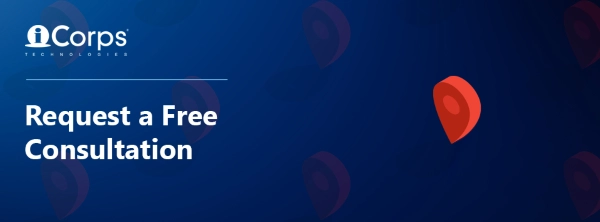Whether it's a ransomware attack, a natural disaster, or corruption of a customer's database, you want to make sure that your business's IT system can recover. Having a business continuity and disaster recovery (BCDR) plan is essential. There are a plethora of BCDR solutions (on-premise, hybrid, or cloud-based), and it's important to choose the best one for your business needs. Here's what you should be looking out for when assessing your next BCDR solution.
Find the Right Business Continuity/Disaster Recovery Solution in 3 Steps:
1. Evaluate BCDR and DRaaS Solutions
One of the biggest factors when choosing a BCDR solution is determining whether you'll outsource support or handle it internally. If you plan on outsourcing assistance, you'll need to partner with a managed services provider (MSP) that is proficient in continuity and compliance solutions. Since many BCDR solutions combine cloud, software, and hardware elements - you'll need a process to support your virtual assets, local servers and desktops. BCDR hardware has several purposes including:
- Hosting BCDR software
- Transmitting server images to the cloud for disaster recovery
- Storing local copies of backup server images for routine restores
- Acting as the primary server during a failover, allowing business to continue during restoration
BCDR software is used to automate and manage backup and recovery processes. After an initial full server backup, BCDR software takes incremental snapshots to create "recovery points" or point-in-time server images. Recovery points are used to restore the state of a server or workstation to a specific point in time (before it failed or data was corrupted).
2. Seek BCDR Cloud Options
The best BCDR solutions have a cloud backup as well as a recovery component. This is because the cloud serves two purposes in a BCDR solution. The first is to provide offsite storage space for server and workstation images used for restores. The second is to take over critical operations when a failover occurs.
Backups can be stored locally - on an appliance or backup server in your data center - or remotely, in the cloud. For BCDR, it's best to keep copies of your backups in both places. In other words, if it's not possible to restore a system locally, you can failover to the cloud. Similarly, your solution should address a variety of data restoration scenarios, ranging from restoring a few lost files to recovering from a complete server failure or the destruction of multiple servers and PCs. Restoring from local backups is faster, while the option of failing over to the cloud gives you ultimate protection against worst-case scenarios.
![[BLOG] 5 Questions to Ask Before Buying a Cyber Insurance Policy Webp](https://blog.icorps.com/hs-fs/hubfs/2021%20Webp%20Image%20Files/September%2029/%5BBLOG%5D%205%20Questions%20to%20Ask%20Before%20Buying%20a%20Cyber%20Insurance%20Policy%20Webp.webp?width=600&name=%5BBLOG%5D%205%20Questions%20to%20Ask%20Before%20Buying%20a%20Cyber%20Insurance%20Policy%20Webp.webp)
3. Address Security and Compliance Frameworks
A BCDR should address ransomware detection, point-in-time rollback capabilities, and data immutability. It's important to look for BCDR solutions that comply with Service Organization Control (SOC 1 / SSAE 16 and SOC 2 Type II) reporting standards and feature two-factor authentication. This can help protect your data and reduce the need for manual intervention. If you want to learn how to keep your organization healthy and secure, reach out to us for a free IT consultation.


![[BLOG] 3 Critical IT Services Youre Missing with Your Current IT Provider Webp](https://blog.icorps.com/hs-fs/hubfs/2021%20Webp%20Image%20Files/September%2029/%5BBLOG%5D%203%20Critical%20IT%20Services%20Youre%20Missing%20with%20Your%20Current%20IT%20Provider%20Webp.webp?width=600&name=%5BBLOG%5D%203%20Critical%20IT%20Services%20Youre%20Missing%20with%20Your%20Current%20IT%20Provider%20Webp.webp)



